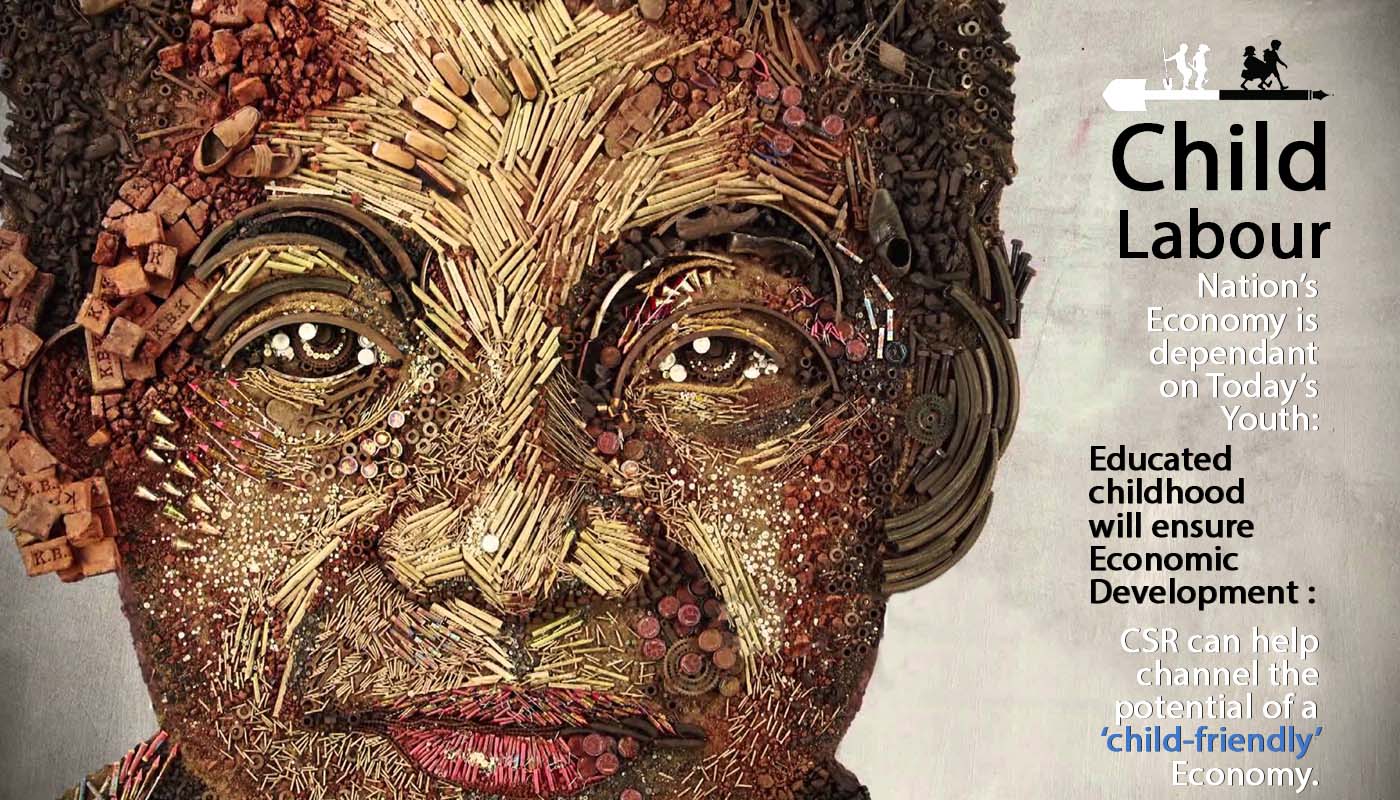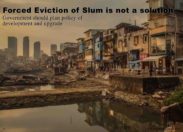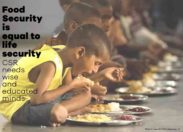Every child is innocent, pure-hearted and full of life. A child is defined by his or her childhood; which is the most beautiful phase of a child’s life. It is the time for play, study and be high on life. It’s a dichotomy that only a section of children get to enjoy their childhood and enjoy a family environment, school life, studying, playing, making friends and pursuing their heart’s desire. Be it the urban or rural sector, childhood is what makes a child develop his/her personality. In the rural areas children are seen helping their parents in their work and have their share of fun as well. But, are all children fortunate enough to have a happy and fun filled childhood? It is a question that we should ask ourselves and become aware of a harsh reality, a social evil that persists – Child Labour!
Child labour means children are forced to work like adults and take part in economic activity. Child labour exists in several forms across the state and country. We see so many children who are deprived of their childhood and do not get the opportunity to enjoy life as children should do.
Children are an asset to society. The welfare of the society is closely related to the welfare of the child. India has the largest workforce of children in the world. They are made to work as slaves in fields and factories in homes and in cottage industries. They are deprived of their childhood.
Child labour, as per the United Nations, is the involvement of any child in any activity or occupation that, by its nature or the circumstances in which it is carried out, is likely to harm their health, safety, or morals. It is a product of an array of numerous socio-economic forces, a brake on sustainable development, and a huge question mark to the idea of a just society. A recent report from the International Labour Organization reports that at least 64 million girls and 88 million boys work as child labourers globally. Out of these 152 million children, more than 72 million work in hazardous conditions. In addition to this, almost 70 million children work in more acceptable employment conditions, taking the total children involved in employment or labour of some form to almost 220 million globally.
The incidence rate of child labour is more than 50% where mostly the age Group of the child labourers is 5 to 14, and surprisingly, this ratio is prevalent in developing countries. Agriculture sector showcases the highest rate of child labour and ironically most of them are pushed into this by their own parents to work in the farms.
Causes of child labour:
What is the reason of engaging child labour?
- To have or increase the income of the underprivileged family.
- To reduce the labour cost in a production organization.
- Miscellaneous reasons for engaging as domestic aid as the children are less likely to be dishonest or less liable to misbehave or be violent.
- The lack of livelihood options and poverty force the children to contribute to the income of the family.
- The urban migration and rural poverty expose the children to being trafficked for work.
In a developed society where every citizen counts and all citizens have to have proper education, health care supports, games and entertainment and complete his education so that when he is a fully grown adult he can get a full employment with standard salary. It is illegal as no matter what the circumstances be, it is wrong to snatch away the time of life where a person is meant to learn and enjoy his childhood, this is the time when an individual invest himself/herself in various learning process by parents, nature or surrounding but if at this time he/she stay stuck in any kind of labour work they miss on the crucial time of their childhood. Child labour forces a child to suffer mentally, physically and emotionally.
Cure for the child labour:
- Child Labour is not uniform and it takes various forms depending on the gender and age of the child, whether they work with families or work independently and the kind of work that they are made to do.
- There is no single strategy that can eliminate child labour in India due to the complex nature of child labour.
- Combatting the child labour needs a co-ordinated action for a longer period of time which engages the government and various stakeholders. This incorporates the employers, trade unions, community-based organizations, NGOs, mass media and educational institutions.
- It is extremely important that the mindsets and attitudes of the people are changed in allowing the children to go to school and employing adults instead of the underaged. Children should get the chance to socialize, play and learn.
- Education is the highly successful method for eliminating the child labour. This incorporates utilising the existing systems to make sure child workers return to school, providing relevant vocational training, addressing violence in schools, enhancing the relevance and quality of education and widening the education access to schooling.
Children are the future of any country, they make the society and their morals and ideas will shape the future, but child labour is an evil which is threatening the whole of the world.
In the words of William Shakespeare – ‘Children are the fathers of men’. If this holds true, then we should ensure every child’s childhood. We should work for a brighter future and a progressive Indian society. Steps should be taken to educate and help these children, who are victims of child labour, in securing their future, instead of depriving them of their childhood. There are some schools, institutions and organizations who have taken up the task of educating street children and getting them to enjoy their childhood like any normal child. After all they are also Indian citizens of the Republic of India, whose constitution is for the people, of the people and by the people.
jnicsr #jnicsrtimes #nikhilkumarsarojaz







Leave a Reply